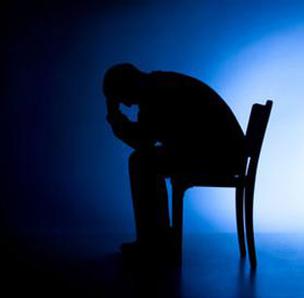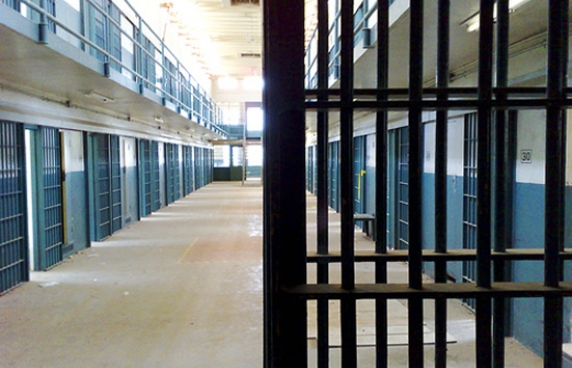Prison System As De facto Mental Health Service Center Brings Personal, Fiscal Costs
/
The UConn Health Center, on the pages of its Correctional Managed Health Care website, points out that “the public health burden that jails and prisons bear is enormous. A disproportionate number of incarcerated individuals are medically and/or psychiatrically compromised.” Connecticut is one of only six states with an integrated jail and prison system.
Statewide, each of the 24,936 annual jail and prison “admissions” requires a medical and mental health intake health screening. Generally, the website notes, “one out of five requires prompt medical or mental health intervention.” Schizophrenia, bipolar disorder, post traumatic stress disorder, depression, severe personality disorders, traumatic brain injury and addictive disorders are “overrepresented in this population,” the website indicates.
Mental health services a re available at all prisons and jails in the state, with comprehensive mental health programs at Osborn, Northern, York, Manson Youth, and Garner correctional institutions. Mental health services are comprehensive from admission to discharge, the website explains, and “focus on access to care and outreach, screening and assessment, identification, treatment planning, classification, provision of distinct levels of service and continuity of care upon discharge to the community.”
re available at all prisons and jails in the state, with comprehensive mental health programs at Osborn, Northern, York, Manson Youth, and Garner correctional institutions. Mental health services are comprehensive from admission to discharge, the website explains, and “focus on access to care and outreach, screening and assessment, identification, treatment planning, classification, provision of distinct levels of service and continuity of care upon discharge to the community.”
The mental health department includes approximately 14 psychiatrists, 17 psychologists, 10 mental health nurse practitioners, 19 psychiatric nurse clinicians, 69 social workers, and 15 professional counselors to serve the needs of approximately 19 percent of the inmate population, about 3,400 individuals. The website indicates that as of June 2013, the prison population was 17,998 individuals (16,985 incarcerated and 1,013 in halfway houses).
A recent The New York Times column by Nicholas Kristof posited that people suffering from mental illness often commit a crime in order to obtain treatment. Because of the acute shortage of treatment facilities outside of prison, decades after the wholesale closing of mental health care facilities nationwide, prisons have become the nation’s de facto treatment centers. Among the stark facts outlined:
- More than half of prisoners in the United States have a mental health problem, according to a 2006 U.S. Justice Department Study.
- Among female inmates, almost three-quarters have a mental disorder.
- Nationwide, more than three times as many mentally ill people are housed in prisons and jails as in hospitals, according to a 2010 study by the National Sheriffs’ Association and the Treatment Advocacy Center.
- Forty percent of people with serious mental illnesses have been arrested at some point in their lives
- Taxpayers spend as much as $300 or $400 a day supporting patients with psychiatric disorders while they are in jail, partly because the mentally ill require mediation and extra supervision and care.
- In 1955, there was one bed in a psychiatric ward for every 300 Americans; now there is one for every 3,000 Americans, according to a 2010 study.
Writing in the Connecticut Law Review, Christina Canales pointed out in 2012 that “Although a good plan in theory, deinstitutionalization quickly became one of the main reasons for the substantial increase in mentally ill individuals in prisons. Many of the originally considered community mental health centers were never developed, leaving such individuals with nowhere to turn for treatment.”
The 2013 Legislation Report of the National Alliance on Mental Illness indicated that “Disproportionate numbers of people with mental illness are involved in the criminal justice system often as a result of untreated or undertreated mental illnes s. Thoughtful release planning and progressive probation or parole procedures increase the likelihood of successful re-entry for prisoners living with mental illness.”
s. Thoughtful release planning and progressive probation or parole procedures increase the likelihood of successful re-entry for prisoners living with mental illness.”
In FY 2013, the UConn Health Center website details, there were 191,202 visits to social workers, psychologists and psychiatric nurse clinicians, including suicide risk assessments within DOC facilities. In addition, there were 20,056 visits to psychiatrists and 16,826 visits to Advanced Practice Registered Nurses.
The Connecticut Health Investigative Team (C-HIT) has reported that in 2003, "an estimated 13 percent were considered mentally ill." In 2003, Connecticut’s prison population was 19, 605, according to the Office of Policy and Management’s Criminal Justice Policy and Planning Division. That would have been approximately 2,549 individuals.





























